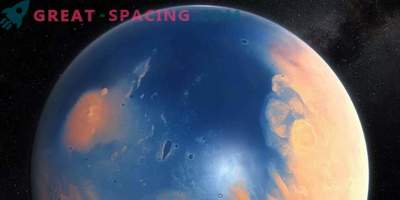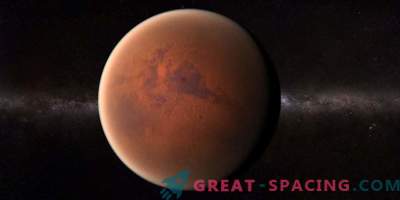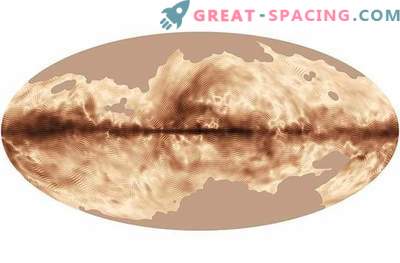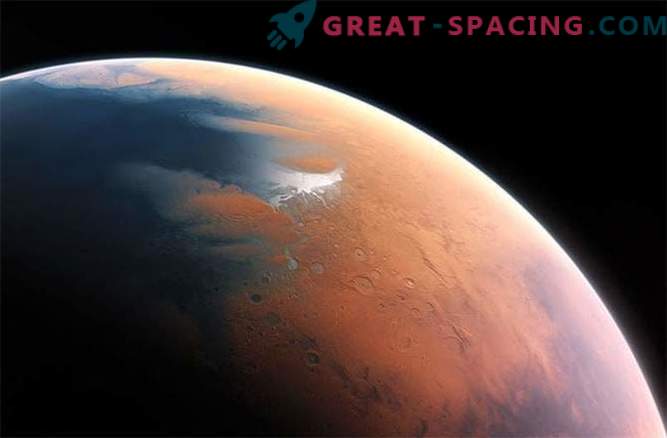
Mars was once a small, wet and blue world, but over the past 4 billion years Mars has dried up and turned into a desert.
But how much water was on Mars? According to a study published in the journal Science, the Martian northern hemisphere was likely covered by the ocean, covering an area equal to the area of the Atlantic Ocean, with depth in some places up to 1, 6 kilometers (1 mile).
"Our study estimates how much water was once on Mars," said Geronimo Villanueva, from Goddard Space Flight Center NASA in Greenbelt, Maryland.
For 6 years, Villanueva and his team used the Very Large Telescope telescope in Chile, the Keck Observatory tools and the NASA infrared telescope located on Mauna Kea Mountain in Hawaii to study the distribution of water molecules in the Mars atmosphere. This helped them create a comprehensive map of water distribution and seasonal changes.
It becomes clear that for many eons, Mars has lost most of its atmosphere into space. This also applies to water.
Water in the oceans of the Earth contains H2O molecules, that is, a hydrogen atom bound to 2 oxygen atoms, and, in smaller quantities, a not so familiar HDO molecule. HDO is a type of water molecule that contains one hydrogen atom, one oxygen atom and one deuterium atom. The deuterium atom is an isotope of hydrogen. While hydrogen consists of one atom of a proton and an electron, deuterium consists of one proton, one neutron and one electron. Thus, due to the extra neutron in deuterium, HDO molecules are slightly heavier than ordinary molecules.
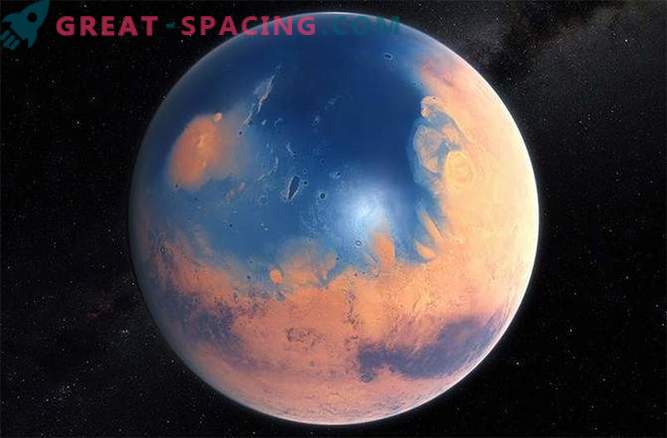
This artist’s presentation shows how Mars would have looked about four billion years ago. The young planet would have enough water to cover the entire surface with a layer of 140 meters, but it is more likely that all of the water was combined into a vast ocean, occupying almost half of the northern hemisphere of Mars.
Also known as “semi-heavy water”, HDO is less susceptible to evaporation and loss into space, so logic dictates that if ordinary water evaporated (or sublimated) into space, then HDO could have stayed.
Using powerful ground-based observatories, researchers were able to determine the distribution of HDO molecules and H2O molecules and compare their relationship to liquid water, which is in its natural state.
Of particular interest is the north and south poles of Mars, where glaciers containing water ice and carbon dioxide have survived to this day. The water contained in the glaciers, as scientists believe, reflects the main stages of the evolution of water, starting with the wet Noah period of the Red Planet (approximately 3, 7 billion years ago) and until today. It turns out that the water enclosed in these polar regions is enriched with HDO by a factor of 7, compared with water in the oceans of the Earth. This, according to the study, indicates that Mars has lost 6, 5 times more water than what is currently on glaciers. Thus, the original volume of the ocean of Mars was supposed to reach at least 20 million cubic kilometers.
Considering the global peculiarities of the Mars area, most of the water would be concentrated around the northern plains, in an area dominated by low-lying lands.
"Given the amount of water that Mars lost, it’s very likely that Mars remained wet for a longer period of time than previously thought," said Michael Mumma of Goddard Space Flight Center NASA in Greenbelt.










